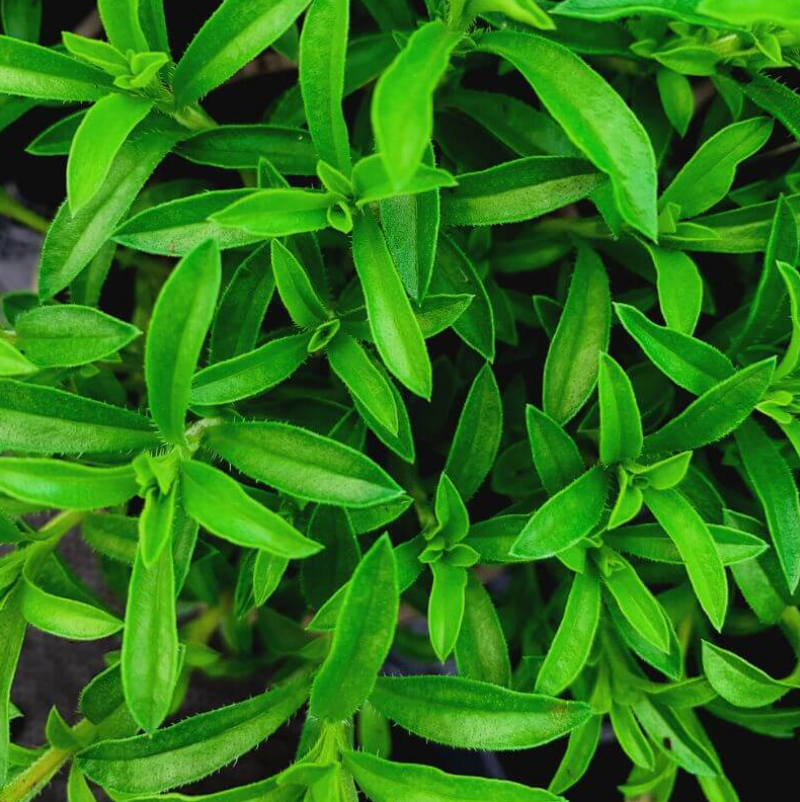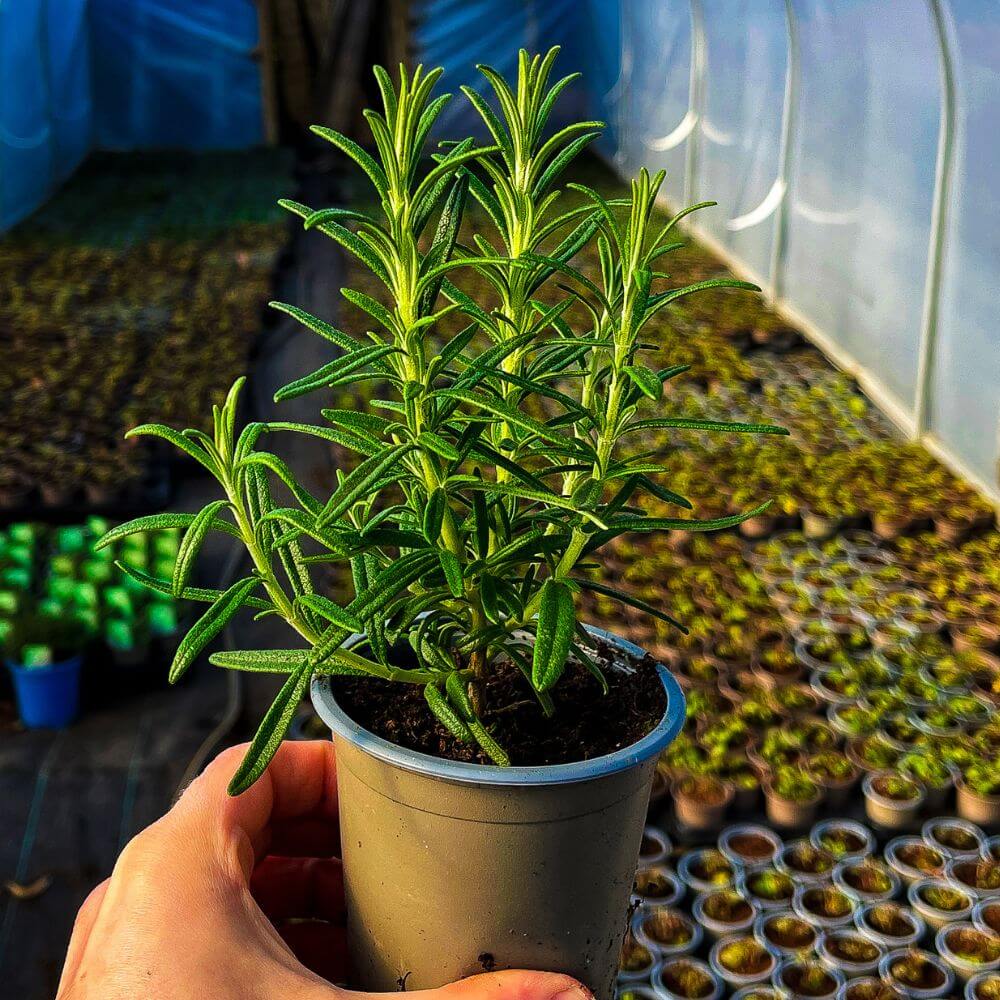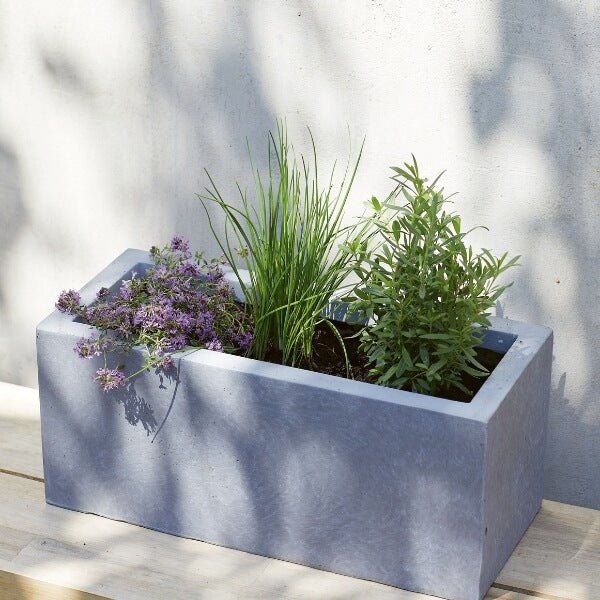How to grow herbs in containers
Container gardening is a really accessible way to get growing with endless possibilities, particularly when it comes to herbs. Whether you're working with a small patio garden, a balcony or a border of a pathway, pots filled with fragrant herbs make a big impact on all the senses. Whilst potted herb plants need a little extra TLC, with particular attention paid to the feeding and watering of your plants, they're still incredibly low-maintenance. We've got some tips and tricks to help you out right here.
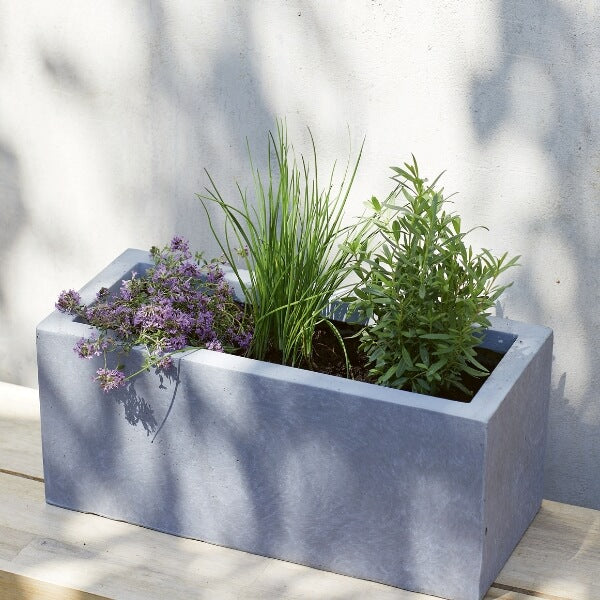
Do herbs grow better in the ground or in pots?
Whilst the majority of herbs will overall thrive better in the ground, there are lots of ways to get the best from your herbs in pots. The additional benefit of container growing is that you can move them whenever you need to, be it to bring them under cover for a hard frost in the winter or to implement a change of garden design.
Some herbs such as mint are best kept contained within a pot, even when sunken into the ground as this restricts the root growth and stops them from taking over your entire garden. The best example of this is mint, which we always recommend growing in a pot for this exact reason.
How deep does a container need to be to grow herbs?
We'd recommend a pot around 15-30cm deep for your herbs as this will allow their roots space to grow. When you're planting them out into your pots, be sure to give them room around the root ball with a spacing of around 10cm to stop them from competing with one another.
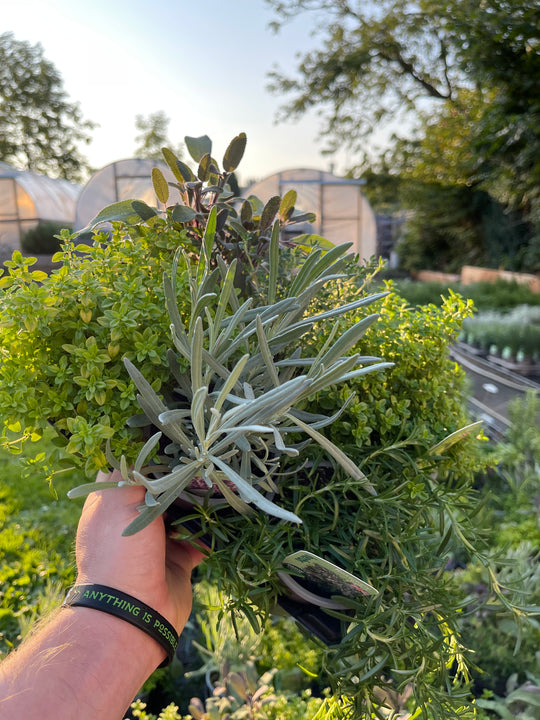
Which herbs grow best together in containers?
There are so many combinations of herbs that work wonderfully well together, so we thought we'd just give you a little inspiration.
The Classic Herb Garden Collection - Rosemary, Creeping Red Thyme, Sage, Hyssop, Moroccan Mint, Lemon Variegated Thyme
The Herbal Tea Collection - Lemon Mint, Lemon 'Curd' Thyme, Blackcurrant Sage, Moroccan Mint, Tashkent Mint, Roman Chamomile
The Strange and Beautiful Collection - This collection is updated weekly with a selection of delectable treats that are a little different from the norm.
The Fruit Bowl Herb Collection - Blackcurrant Sage, Orange Thyme, Orange Mint, Mint 'Jessica's Sweet Pear', Alpine Strawberry, Lemon Curd Thyme
The Boozy Herb Collection - Lime Mint, Strawberry Mint, Lemon Verbena, Rosemary, Orange Thyme, Pineapple Mint
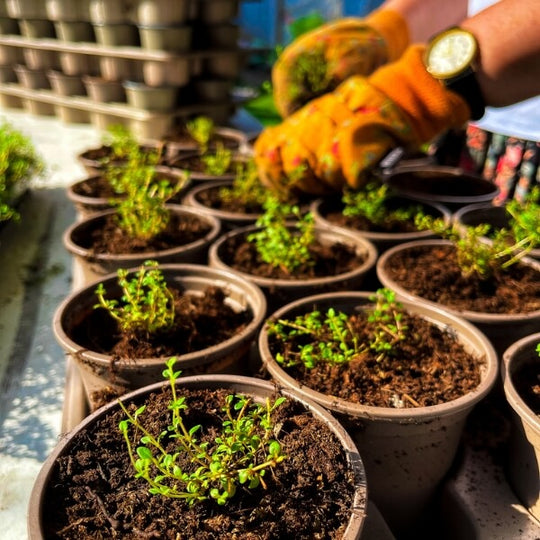
How to plant herbs in a container
Once you've selected your vessel and your herb combinations, it's time to get planting. You want to ensure you use a free-draining compost so you might want to add some extra grit in the form of perlite or coarse grit to help with this. Add a layer of compost to the bottom of the pot, leaving enough space for the entire depth of the pot to be placed on top. Then position your herbs into their final places and fill in the gaps between the plants with your gritty compost mixture. Water them well to help them get started and then ensure they don't dry out during warm and windy spells. For a final flourish, you can add a top dressing of grit, crushed shells or bark to cover the compost whilst the herbs establish.

Looking after your container-grown herbs
The three key elements of looking after your container-grown herbs are based around food, water and pruning. Potted plants have a tendency to dry out very quickly, particularly during the summer months so make sure you're keeping a keen eye on their water levels. In the winter, you want to make sure they're not sat in a wet puddle as the majority of herbs really hate to be sat in soggy soil. Give your herbs a feed once a month or so during the peak growing season to give them a little boost, and you may wish to re-pot your plants every 2-3 years into fresh compost. Finally, it's important to keep on top of picking and pruning, not only so that you can make the most of your delicious herby treats, but also to help keep the plant growing vigorously and in good health.
We really hope that this has given you some ideas on where to start with your container herb gardens, but if you need any advice at all we're always happy to chat via Instagram or over email so drop us a message!


